1.2: موضوعات ومفاهيم علم الأحياء
- Page ID
- 196055
المهارات اللازمة للتطوير
- تحديد ووصف خصائص الحياة
- وصف مستويات التنظيم بين الكائنات الحية
- التعرف على شجرة النشوء والتطور وتفسيرها
- ضع قائمة بأمثلة للتخصصات الفرعية المختلفة في علم الأحياء
علم الأحياء هو العلم الذي يدرس الحياة، ولكن ما هي الحياة بالضبط؟ قد يبدو هذا وكأنه سؤال سخيف مع إجابة واضحة، ولكن ليس من السهل دائمًا تحديد الحياة. على سبيل المثال، يدرس فرع من فروع علم الأحياء يسمى علم الفيروسات الفيروسات الفيروسات، التي تظهر بعض خصائص الكيانات الحية ولكنها تفتقر إلى غيرها. اتضح أنه على الرغم من أن الفيروسات يمكن أن تهاجم الكائنات الحية وتسبب الأمراض وحتى تتكاثر، إلا أنها لا تستوفي المعايير التي يستخدمها علماء الأحياء لتحديد الحياة. وبالتالي، فإن علماء الفيروسات ليسوا من علماء الأحياء، بالمعنى الدقيق للكلمة. وبالمثل، يدرس بعض علماء الأحياء التطور الجزيئي المبكر الذي أدى إلى ظهور الحياة؛ نظرًا لأن الأحداث التي سبقت الحياة ليست أحداثًا بيولوجية، فإن هؤلاء العلماء مستبعدون أيضًا من علم الأحياء بالمعنى الدقيق للمصطلح.
واجهت البيولوجيا منذ بداياتها الأولى ثلاثة أسئلة: ما هي الخصائص المشتركة التي تجعل شيئًا ما «حيًا»؟ وبمجرد أن نعرف شيئًا ما على قيد الحياة، كيف نجد مستويات ذات مغزى من التنظيم في هيكله؟ وأخيرًا، عندما نواجه التنوع الملحوظ للحياة، كيف ننظم الأنواع المختلفة من الكائنات الحية حتى نتمكن من فهمها بشكل أفضل؟ مع اكتشاف كائنات حية جديدة كل يوم، يواصل علماء الأحياء البحث عن إجابات لهذه الأسئلة وغيرها.
خصائص الحياة
تشترك جميع الكائنات الحية في العديد من الخصائص أو الوظائف الرئيسية: الترتيب، والحساسية أو الاستجابة للبيئة، والتكاثر، والتكيف، والنمو والتنمية، والتنظيم، والتوازن، ومعالجة الطاقة، والتطور. عند النظر إليها معًا، تعمل هذه الخصائص التسع على تعريف الحياة.
أمر
الكائنات الحية هي هياكل منظمة للغاية ومنسقة تتكون من خلية واحدة أو أكثر. حتى الكائنات البسيطة جدًا وحيدة الخلية معقدة بشكل ملحوظ: داخل كل خلية، تشكل الذرات الجزيئات؛ وهذه بدورها تشكل عضيات الخلية وغيرها من الشوائب الخلوية. في الكائنات متعددة الخلايا (الشكل\(\PageIndex{1}\))، تشكل الخلايا المماثلة الأنسجة. الأنسجة، بدورها، تتعاون لإنشاء الأعضاء (هياكل الجسم ذات الوظيفة المميزة). تعمل الأجهزة معًا لتشكيل أنظمة الأعضاء.
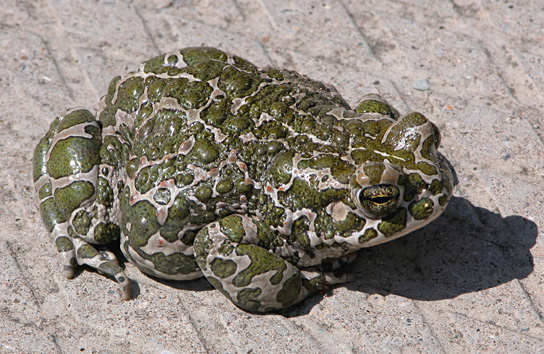
الحساسية أو الاستجابة للمنبهات
تستجيب الكائنات الحية للمحفزات المتنوعة. على سبيل المثال، يمكن للنباتات أن تنحني نحو مصدر الضوء، أو تتسلق الأسوار والجدران، أو تستجيب للمس (الشكل\(\PageIndex{2}\)). حتى البكتيريا الصغيرة يمكنها التحرك نحو المواد الكيميائية أو بعيدًا عنها (عملية تسمى الكيموتوكسيس) أو الضوء (الفوتوكسيس). يعتبر التحرك نحو التحفيز استجابة إيجابية، بينما يعتبر الابتعاد عن التحفيز استجابة سلبية.
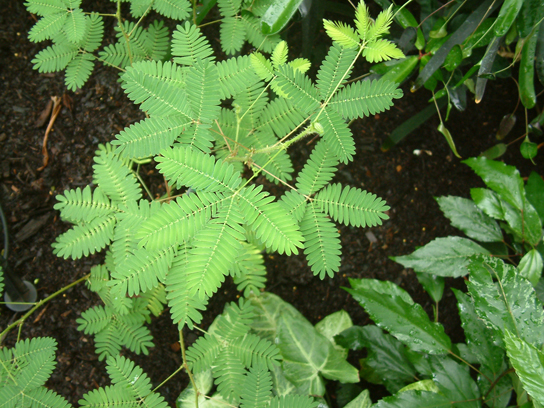
رابط إلى التعلم
فيديو: شاهد هذا الفيديو لمعرفة كيفية استجابة النباتات للمحفز - من الفتحة إلى الضوء، إلى لف المحلق حول الفرع، لالتقاط الفريسة.
الاستنساخ
تتكاثر الكائنات أحادية الخلية عن طريق تكرار الحمض النووي الخاص بها أولاً، ثم تقسيمه بالتساوي بينما تستعد الخلية للانقسام لتشكيل خليتين جديدتين. غالبًا ما تنتج الكائنات متعددة الخلايا خلايا جرثومية إنجابية متخصصة ستشكل أفرادًا جدد. عندما يحدث التكاثر، تنتقل الجينات التي تحتوي على الحمض النووي إلى نسل الكائن الحي. تضمن هذه الجينات أن النسل سينتمي إلى نفس النوع وسيكون له خصائص متشابهة، مثل الحجم والشكل.
النمو والتطور
تنمو الكائنات الحية وتتطور باتباع تعليمات محددة مشفرة بواسطة جيناتها. توفر هذه الجينات تعليمات من شأنها توجيه النمو الخلوي والتطور، مما يضمن نمو صغار الأنواع (الشكل\(\PageIndex{3}\)) لإظهار العديد من الخصائص نفسها التي يتمتع بها آباؤها.

اللائحة
حتى أصغر الكائنات الحية معقدة وتتطلب آليات تنظيمية متعددة لتنسيق الوظائف الداخلية والاستجابة للمحفزات والتعامل مع الضغوط البيئية. مثالان على الوظائف الداخلية المنظمة في الكائن الحي هما نقل المغذيات وتدفق الدم. تؤدي الأعضاء (مجموعات الأنسجة التي تعمل معًا) وظائف محددة، مثل حمل الأكسجين في جميع أنحاء الجسم، وإزالة النفايات، وإيصال العناصر الغذائية إلى كل خلية، وتبريد الجسم.
التوازن
لكي تعمل الخلايا بشكل صحيح، تحتاج إلى ظروف مناسبة مثل درجة الحرارة المناسبة ودرجة الحموضة والتركيز المناسب للمواد الكيميائية المتنوعة. ومع ذلك، قد تتغير هذه الشروط من لحظة إلى أخرى. تستطيع الكائنات الحية الحفاظ على الظروف الداخلية ضمن نطاق ضيق باستمرار تقريبًا، على الرغم من التغيرات البيئية، من خلال التوازن (حرفيًا، «الحالة المستقرة») - قدرة الكائن الحي على الحفاظ على الظروف الداخلية الثابتة. على سبيل المثال، يحتاج الكائن الحي إلى تنظيم درجة حرارة الجسم من خلال عملية تعرف باسم التنظيم الحراري. تحتوي الكائنات الحية التي تعيش في المناخات الباردة، مثل الدب القطبي (الشكل\(\PageIndex{4}\))، على هياكل الجسم التي تساعدها على تحمل درجات الحرارة المنخفضة والحفاظ على حرارة الجسم. تشمل الهياكل التي تساعد في هذا النوع من العزل الفراء والريش والشحم والدهون. في المناخات الحارة، تمتلك الكائنات الحية طرقًا (مثل التعرق عند البشر أو اللهاث في الكلاب) تساعدها على التخلص من حرارة الجسم الزائدة.
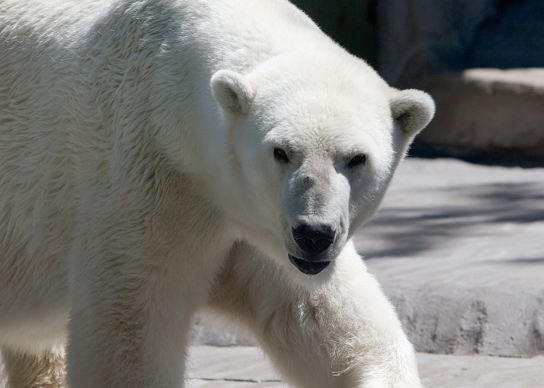
معالجة الطاقة
تستخدم جميع الكائنات الحية مصدرًا للطاقة في أنشطتها الأيضية. تلتقط بعض الكائنات الحية الطاقة من الشمس وتحولها إلى طاقة كيميائية في الغذاء؛ بينما تستخدم أخرى الطاقة الكيميائية في الجزيئات التي تأخذها كغذاء (الشكل\(\PageIndex{5}\)).
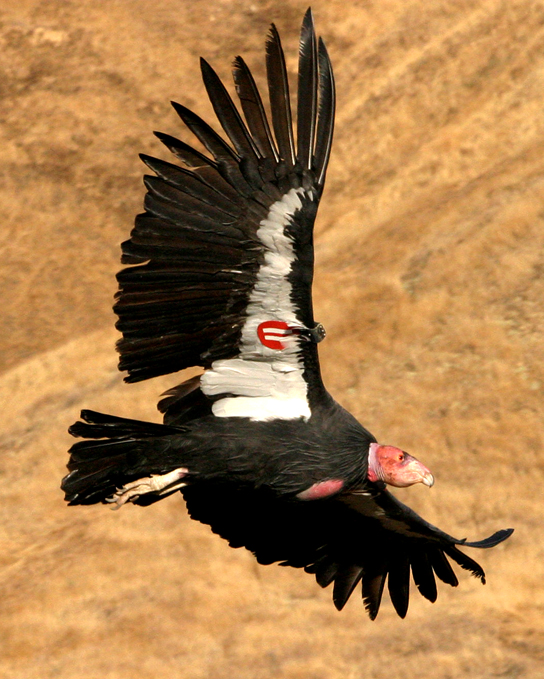
مستويات تنظيم الكائنات الحية
الكائنات الحية منظمة للغاية ومنظمة، وتتبع التسلسل الهرمي الذي يمكن فحصه على نطاق من صغير إلى كبير. الذرة هي أصغر وحدة أساسية للمادة. وتتكون من نواة محاطة بالإلكترونات. تشكل الذرات جزيئات. الجزيء عبارة عن بنية كيميائية تتكون من ذرتين على الأقل يتم ربطهما معًا بواسطة رابط كيميائي واحد أو أكثر. العديد من الجزيئات المهمة بيولوجيًا هي الجزيئات الكبيرة، وهي جزيئات كبيرة تتشكل عادةً عن طريق البلمرة (البوليمر عبارة عن جزيء كبير يتكون من الجمع بين وحدات أصغر تسمى المونومرات، وهي أبسط من الجزيئات الكبيرة). مثال على الجزيء الكبير هو حمض الديوكسي ريبونوكلييك (DNA\(\PageIndex{6}\)) (الشكل)، الذي يحتوي على تعليمات لهيكل وعمل جميع الكائنات الحية.
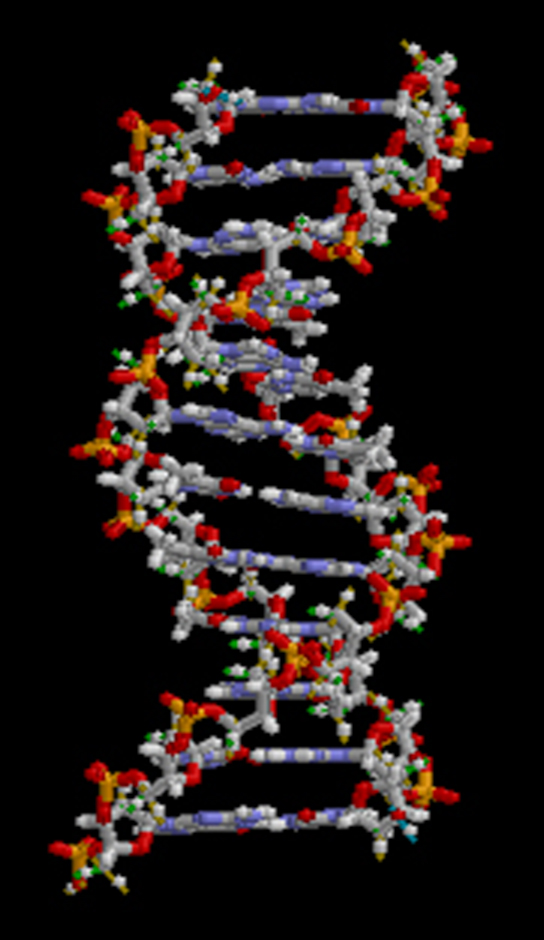
رابط إلى التعلم

فيديو: شاهد هذا الفيديو الذي يحرك البنية ثلاثية الأبعاد لجزيء الحمض النووي الموضح في الشكل\(\PageIndex{6}\).
Some cells contain aggregates of macromolecules surrounded by membranes; these are called organelles. Organelles are small structures that exist within cells. Examples of organelles include mitochondria and chloroplasts, which carry out indispensable functions: mitochondria produce energy to power the cell, while chloroplasts enable green plants to utilize the energy in sunlight to make sugars. All living things are made of cells; the cell itself is the smallest fundamental unit of structure and function in living organisms. (This requirement is why viruses are not considered living: they are not made of cells. To make new viruses, they have to invade and hijack the reproductive mechanism of a living cell; only then can they obtain the materials they need to reproduce.) Some organisms consist of a single cell and others are multicellular. Cells are classified as prokaryotic or eukaryotic. Prokaryotes are single-celled or colonial organisms that do not have membrane-bound nuclei; in contrast, the cells of eukaryotes do have membrane-bound organelles and a membrane-bound nucleus.
In larger organisms, cells combine to make tissues, which are groups of similar cells carrying out similar or related functions. Organs are collections of tissues grouped together performing a common function. Organs are present not only in animals but also in plants. An organ system is a higher level of organization that consists of functionally related organs. Mammals have many organ systems. For instance, the circulatory system transports blood through the body and to and from the lungs; it includes organs such as the heart and blood vessels. Organisms are individual living entities. For example, each tree in a forest is an organism. Single-celled prokaryotes and single-celled eukaryotes are also considered organisms and are typically referred to as microorganisms.
All the individuals of a species living within a specific area are collectively called a population. For example, a forest may include many pine trees. All of these pine trees represent the population of pine trees in this forest. Different populations may live in the same specific area. For example, the forest with the pine trees includes populations of flowering plants and also insects and microbial populations. A community is the sum of populations inhabiting a particular area. For instance, all of the trees, flowers, insects, and other populations in a forest form the forest’s community. The forest itself is an ecosystem. An ecosystem consists of all the living things in a particular area together with the abiotic, non-living parts of that environment such as nitrogen in the soil or rain water. At the highest level of organization (Figure \(\PageIndex{7}\)), the biosphere is the collection of all ecosystems, and it represents the zones of life on earth. It includes land, water, and even the atmosphere to a certain extent.
Art Connection
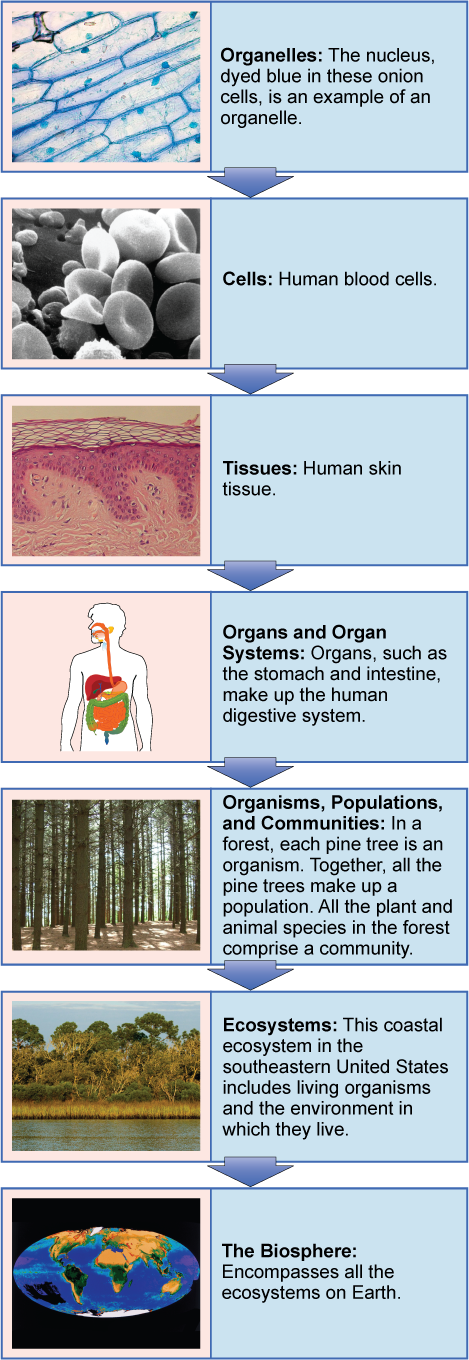
Which of the following statements is false?
- Tissues exist within organs which exist within organ systems.
- Communities exist within populations which exist within ecosystems.
- Organelles exist within cells which exist within tissues.
- Communities exist within ecosystems which exist in the biosphere.
The Diversity of Life
The fact that biology, as a science, has such a broad scope has to do with the tremendous diversity of life on earth. The source of this diversity is evolution, the process of gradual change during which new species arise from older species. Evolutionary biologists study the evolution of living things in everything from the microscopic world to ecosystems.
The evolution of various life forms on Earth can be summarized in a phylogenetic tree (Figure \(\PageIndex{8}\)). A phylogenetic tree is a diagram showing the evolutionary relationships among biological species based on similarities and differences in genetic or physical traits or both. A phylogenetic tree is composed of nodes and branches. The internal nodes represent ancestors and are points in evolution when, based on scientific evidence, an ancestor is thought to have diverged to form two new species. The length of each branch is proportional to the time elapsed since the split.

Evolution Connection: Carl Woese and the Phylogenetic Tree
In the past, biologists grouped living organisms into five kingdoms: animals, plants, fungi, protists, and bacteria. The organizational scheme was based mainly on physical features, as opposed to physiology, biochemistry, or molecular biology, all of which are used by modern systematics. The pioneering work of American microbiologist Carl Woese in the early 1970s has shown, however, that life on Earth has evolved along three lineages, now called domains—Bacteria, Archaea, and Eukarya. The first two are prokaryotic cells with microbes that lack membrane-enclosed nuclei and organelles. The third domain contains the eukaryotes and includes unicellular microorganisms together with the four original kingdoms (excluding bacteria). Woese defined Archaea as a new domain, and this resulted in a new taxonomic tree (Figure \(\PageIndex{8}\)). Many organisms belonging to the Archaea domain live under extreme conditions and are called extremophiles. To construct his tree, Woese used genetic relationships rather than similarities based on morphology (shape).
Woese’s tree was constructed from comparative sequencing of the genes that are universally distributed, present in every organism, and conserved (meaning that these genes have remained essentially unchanged throughout evolution). Woese’s approach was revolutionary because comparisons of physical features are insufficient to differentiate between the prokaryotes that appear fairly similar in spite of their tremendous biochemical diversity and genetic variability (Figure \(\PageIndex{9}\)). The comparison of homologous DNA and RNA sequences provided Woese with a sensitive device that revealed the extensive variability of prokaryotes, and which justified the separation of the prokaryotes into two domains: bacteria and archaea.
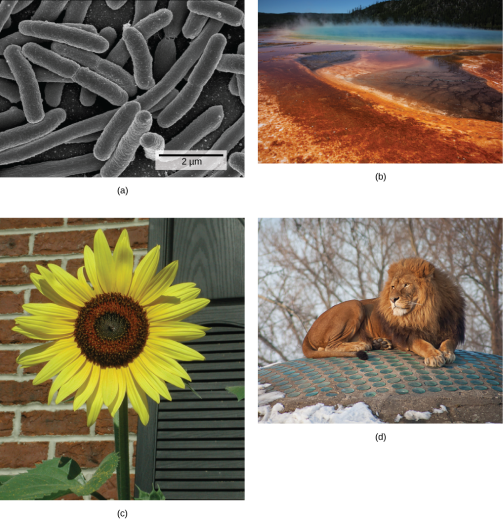
Branches of Biological Study
The scope of biology is broad and therefore contains many branches and subdisciplines. Biologists may pursue one of those subdisciplines and work in a more focused field. For instance, molecular biology and biochemistry study biological processes at the molecular and chemical level, including interactions among molecules such as DNA, RNA, and proteins, as well as the way they are regulated. Microbiology, the study of microorganisms, is the study of the structure and function of single-celled organisms. It is quite a broad branch itself, and depending on the subject of study, there are also microbial physiologists, ecologists, and geneticists, among others.
Career Connection: Forensic Scientist
Forensic science is the application of science to answer questions related to the law. Biologists as well as chemists and biochemists can be forensic scientists. Forensic scientists provide scientific evidence for use in courts, and their job involves examining trace materials associated with crimes. Interest in forensic science has increased in the last few years, possibly because of popular television shows that feature forensic scientists on the job. Also, the development of molecular techniques and the establishment of DNA databases have expanded the types of work that forensic scientists can do. Their job activities are primarily related to crimes against people such as murder, rape, and assault. Their work involves analyzing samples such as hair, blood, and other body fluids and also processing DNA (Figure \(\PageIndex{10}\)) found in many different environments and materials. Forensic scientists also analyze other biological evidence left at crime scenes, such as insect larvae or pollen grains. Students who want to pursue careers in forensic science will most likely be required to take chemistry and biology courses as well as some intensive math courses.
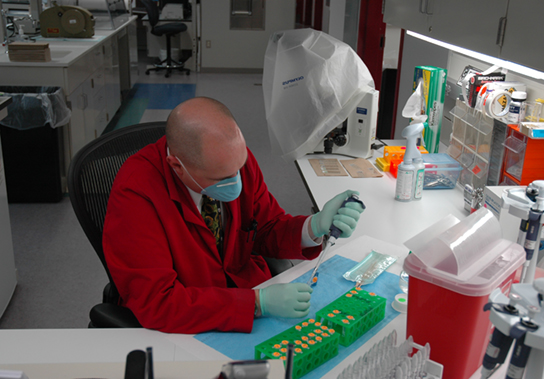
Another field of biological study, neurobiology, studies the biology of the nervous system, and although it is considered a branch of biology, it is also recognized as an interdisciplinary field of study known as neuroscience. Because of its interdisciplinary nature, this subdiscipline studies different functions of the nervous system using molecular, cellular, developmental, medical, and computational approaches.
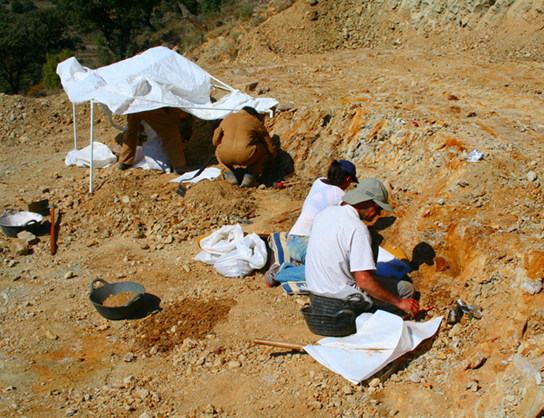
Paleontology, another branch of biology, uses fossils to study life’s history (Figure \(\PageIndex{11}\)). Zoology and botany are the study of animals and plants, respectively. Biologists can also specialize as biotechnologists, ecologists, or physiologists, to name just a few areas. This is just a small sample of the many fields that biologists can pursue.
Biology is the culmination of the achievements of the natural sciences from their inception to today. Excitingly, it is the cradle of emerging sciences, such as the biology of brain activity, genetic engineering of custom organisms, and the biology of evolution that uses the laboratory tools of molecular biology to retrace the earliest stages of life on earth. A scan of news headlines—whether reporting on immunizations, a newly discovered species, sports doping, or a genetically-modified food—demonstrates the way biology is active in and important to our everyday world.
Summary
Biology is the science of life. All living organisms share several key properties such as order, sensitivity or response to stimuli, reproduction, growth and development, regulation, homeostasis, and energy processing. Living things are highly organized parts of a hierarchy that includes atoms, molecules, organelles, cells, tissues, organs, and organ systems. Organisms, in turn, are grouped as populations, communities, ecosystems, and the biosphere. The great diversity of life today evolved from less-diverse ancestral organisms over billions of years. A diagram called a phylogenetic tree can be used to show evolutionary relationships among organisms.
Biology is very broad and includes many branches and subdisciplines. Examples include molecular biology, microbiology, neurobiology, zoology, and botany, among others.
Art Connections
Figure \(\PageIndex{7}\): Which of the following statements is false?
- Tissues exist within organs which exist within organ systems.
- Communities exist within populations which exist within ecosystems.
- Organelles exist within cells which exist within tissues.
- Communities exist within ecosystems which exist in the biosphere.
- Answer
-
Communities exist within populations which exist within ecosystems.
Glossary
- atom
- smallest and most fundamental unit of matter
- biochemistry
- study of the chemistry of biological organisms
- biosphere
- collection of all the ecosystems on Earth
- botany
- study of plants
- cell
- smallest fundamental unit of structure and function in living things
- community
- set of populations inhabiting a particular area
- ecosystem
- all the living things in a particular area together with the abiotic, nonliving parts of that environment
- eukaryote
- organism with cells that have nuclei and membrane-bound organelles
- evolution
- process of gradual change during which new species arise from older species and some species become extinct
- homeostasis
- ability of an organism to maintain constant internal conditions
- macromolecule
- large molecule, typically formed by the joining of smaller molecules
- microbiology
- study of the structure and function of microorganisms
- molecule
- chemical structure consisting of at least two atoms held together by one or more chemical bonds
- molecular biology
- study of biological processes and their regulation at the molecular level, including interactions among molecules such as DNA, RNA, and proteins
- neurobiology
- study of the biology of the nervous system
- organ
- collection of related tissues grouped together performing a common function
- organ system
- level of organization that consists of functionally related interacting organs
- organelle
- small structures that exist within cells and carry out cellular functions
- organism
- individual living entity
- paleontology
- study of life’s history by means of fossils
- phylogenetic tree
- diagram showing the evolutionary relationships among various biological species based on similarities and differences in genetic or physical traits or both; in essence, a hypothesis concerning evolutionary connections
- population
- all of the individuals of a species living within a specific area
- prokaryote
- single-celled organism that lacks organelles and does not have nuclei surrounded by a nuclear membrane
- tissue
- group of similar cells carrying out related functions
- zoology
- study of animals


